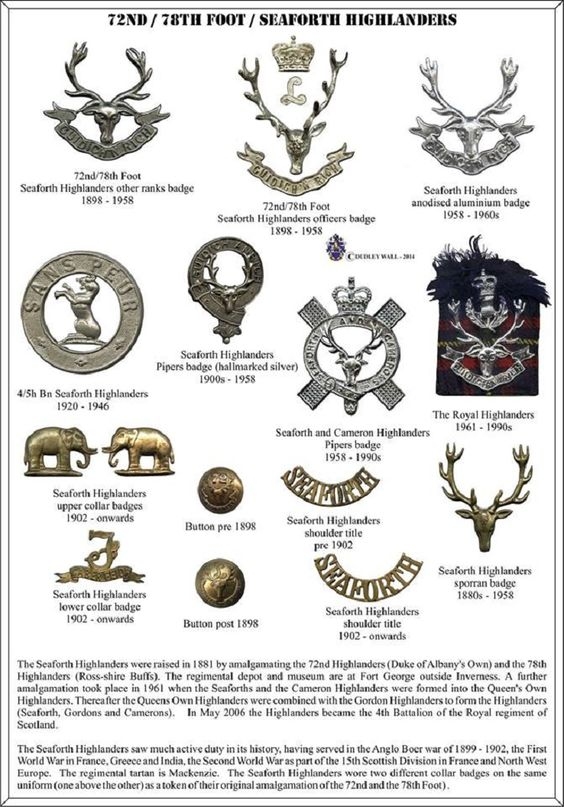

Sporran porté par les officiers
Seaforth Highlanders
-
The regiment was created through the amalgamation of the 72nd (Duke of Albany's Own Highlanders) Regiment of Foot and the 78th (Highlanders) (Ross-shire Buffs) Regiment of Foot, as part of the Childers Reforms of the British Army in 1881.
|
|
|
|
|
|
|
|
|
|
|
|
|
|
|
|